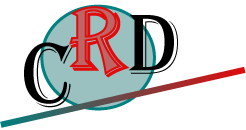Legal Reasoning, Research and Analysis
For many years, I have been examining the research and thinking patterns displayed by self-represented litigants, law students, and attorneys and judges as they prepare for court.
Attorneys and judges learn logical skills in law school based on the IRAC formula (Issues, Rules, Application (or Analysis) and Conclusion), which is a shorthand expression for teachers of legal research and writing. IRAC simply means that the lawyer first determines the relevant legal issues in the fact situation of the instant case, then she discovers the relevant rules through research, creating an induction of statutory and case law, then she applies the relevant rules to the fact situation and determines a probable conclusion to the matter as a matter of law. All legal writings, office memoranda, trial and appellate briefs, opinion letters, etc., use this format. Even pleadings and discovery documents use the formula in an elliptical fashion.
Self-represented litigants not trained in law, however, employ more basic reasoning patterns, those by which basic human reasoning is developed in the first place. While philosophers have debated how this occurs for over two thousand years, recent findings in neuroscience, cognitive science, and cognitive linguistics have clarified the matter considerably. The developments are occurring right now, and not much of them have been digested or incorporated into the teaching process at law schools or information schools. Some law professors versed in the field now argue that these basic reasoning patterns actually operate in law itself, and the IRAC formula, or deductive and inductive logic generally, is just a gloss put onto the work after the fact.
In my ongoing investigation, I seek both to understand how the new
findings affect the theory of legal reasoning and to understand how
members of the legal community can learn to communicate better with
self-represented litigants. From 2006 until 2010, my primary emphasis had been the place where
self-represented litigants have the most problems and must do their
own thinking, the public law library, but I see the matter as much
more far-reaching than that. As a necessary beginning, I developed
the background information needed by lawyers and information scientists
to begin to come to grips with the issues. The first part of the project
is a study of the literature, for which I developed a comprehensive essay
that can be used as a road map into the topic for those currently
untrained in these disciplines or interdisciplinary studies:
The second part of the project will be to develop a a theory of legal discourse that melds the findings of cognitive linguistics and
pedagogical studies, based on the new theories. My consulting work with the Washington State Access to Justice Board as Program Manager for its Pro Se Project (November 2010 to date) has provided me insight into many of the semantic problems of self represented litigants as the Pro Se Project develops plain language court forms for family law. I plan to publish several works as a result of my observations. [ ]
]
